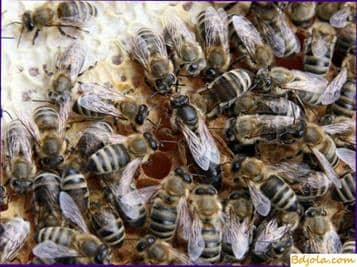
Currently, in the apiaries of our country, many homemade devices are used to catch the uterus during the swarming of the bees. Their common disadvantage is the lack of guarantee against damage to it during catching and retrieval from the cell.
Developed by us, the slick devices for capturing the queen bee are free from these shortcomings and can be widely used in the national economy. They are easy to make from improvised materials both at  Home and in the factory during industrial production.
Home and in the factory during industrial production.
The abutting device Fig. 1 consists of a housing 1 with an upper 2 and a side 3 walls having ventilation holes 4, one-way
Весна на пасеке. Очистка меда.
Mothers and uterus